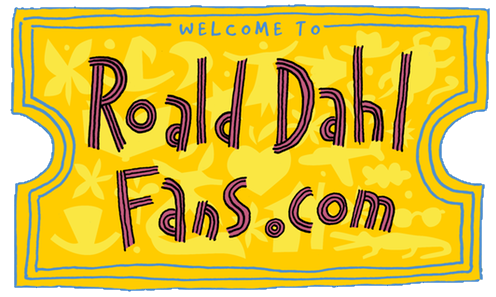This review was written by Vicki Weissman and printed in the January 15, 1989 edition of The New York Times.
“I like Matilda…”
MATILDA By Roald Dahl. Illustrated by Quentin Blake. 240 pp. New York: Viking Kestrel. $13.95. (Ages 8 to 12)
I like Matilda. She is well-mannered, very very good at math, and at the age of four she knows how to find her way to the library. What is more, she brings books home and would rather read them in her bedroom than watch television. What a paragon. Such a child should be loathed by her peers, but fortunately her fairy godmother did not neglect one last gift.
Matilda knows how to be extremely and creatively naughty – lining her father’s hat with super glue, putting her mother’s hair bleach in her father’s hair tonic bottle, for example. This streak of imaginative wickedness not only allows her to make a loyal friend, Lavender, but also to wreak revenge on her unloving parents, defeat the fiendish headmistress, Miss [Trunchbull], and return her victimized teacher, the enchanting Miss Honey, to her rightful place in the world. Having saved the day, Matilda is released from her parents and has the prospect of living happily ever after.
So Roald Dahl has done it again. His new book will surely go straight to children’s hearts. Wonderfully illustrated with Quentin Blake’s spiky drawings and printed in comfortably sized type, the 240 pages of Matilda contain a complete child’s world. More than any other living writer for children, Mr. Dahl has that world at his fingertips. Not for him the obviously improving literature to attract the parent purchaser: in his stories the child is tops. Anarchic and patently impossible plots romp along with no regard at all for the even faintly likely. There is not a chance that seagulls on silken threads will pilot a little boy and a large piece of fruit with a crew of garden insects across the Atlantic Ocean, but in James and the Giant Peach that is exactly what happens. Nor, by any stretch of the imagination, is a factory where chocolate is mixed by a waterfall and candy boats float down chocolate rivers believable. But in Charlie and the Chocolate Factory, that is exactly what the reader gets. It is the same in all the books – The BFG, The Witches, The Giraffe and the Pelly and Me, are other good examples: they take the flagrantly impossible and make it come true. As my daughter put it, “You know that couldn’t possibly happen, but it’s the sort of thing you wish could happen to you.”
This complete surrender to a child’s imagination allows Mr. Dahl a follow-up blessing, a child’s logic. If everything that happens in the book is really fantasy, then people may be disposed of without an eyeblink. Parents die in car crashes (The Witches), or are eaten by a rhinoceros (James and the Giant Peach), aunts are flattened (James again), kind fathers are murdered (Matilda), extreme physical pain is suffered (Charlie and the Chocolate Factory, Matilda) and a boy becomes a mouse (The Witches), but no one is really hurt, and the truths of death and torture are as distant as when the magician saws the lady in half. Children rapidly push aside what they don’t want and, following their lead, so does Mr. Dahl when a character inconveniences the thread of his fantasy. Moreover, he always uses the lively prose children really speak, often British slang, which travels well. Twerps, brutes and blighters abound; when people eat too much, they throw up, and boys have names like Bogtrotter.
The books have much in common with traditional fairy stories. Dreadful things must happen, so that they may be righted. Just as the Caliph must cut off a great many heads to oblige Scheherazade to keep him awake and save herself, or Grandma must be eaten by the wolf before Little Red Riding Hood and the woodsman can catch him, so Sophie must be snatched, terrified, from her bed by the BFG, before she can help him subdue the man-eating giants. There are other similarities too – chants and rhymes, spell recipes, alliterative nonsense language, and in Matilda a mysterious power that lets her tip over a glass of water at 50 paces and write ghostly messages on the blackboard with seemingly self–propelled chalk.
Mr. Dahl also knows that fairy stories need ogres, and in Matilda he gives us three of his best – Matilda’s mother, an overweight, bingo–playing bleached blonde; her father, who wears loud, vulgar clothes and is a crook besides; and Miss [Trunchbull], an enormous, ugly former Olympic hammer thrower, given to seizing small children by their hair and hurling them out of windows.
And, again, as in fairy tales, virtue and poverty are often synonymous – Danny, Charlie, Miss Honey are examples – and enduring terrible ordeals does result in an improvement in the characters’ fortunes; there is a pot of gold at the end of the rainbow. Mr. Dahl conveys a great deal of information, but that is not the point. What’s important is that badness leads to a fall and that the good, with effort and some staying power, wins through.
It is a child’s vision from start to finish. Adults are capricious, ordinary things hold the seeds of mystery and in really tricky spots magic will help you out. And, as long as they obey the rules, children are never wrong. Deep deep down, everything is fair. Mr. Dahl knows that’s not true, as do we, but he’s not going to give the game away. Miraculously, he creates a world where being a child does not have to be justified, but is justification in itself, where “Marvellous things will start happening to you…and you will never again be miserable in your whole life.”
